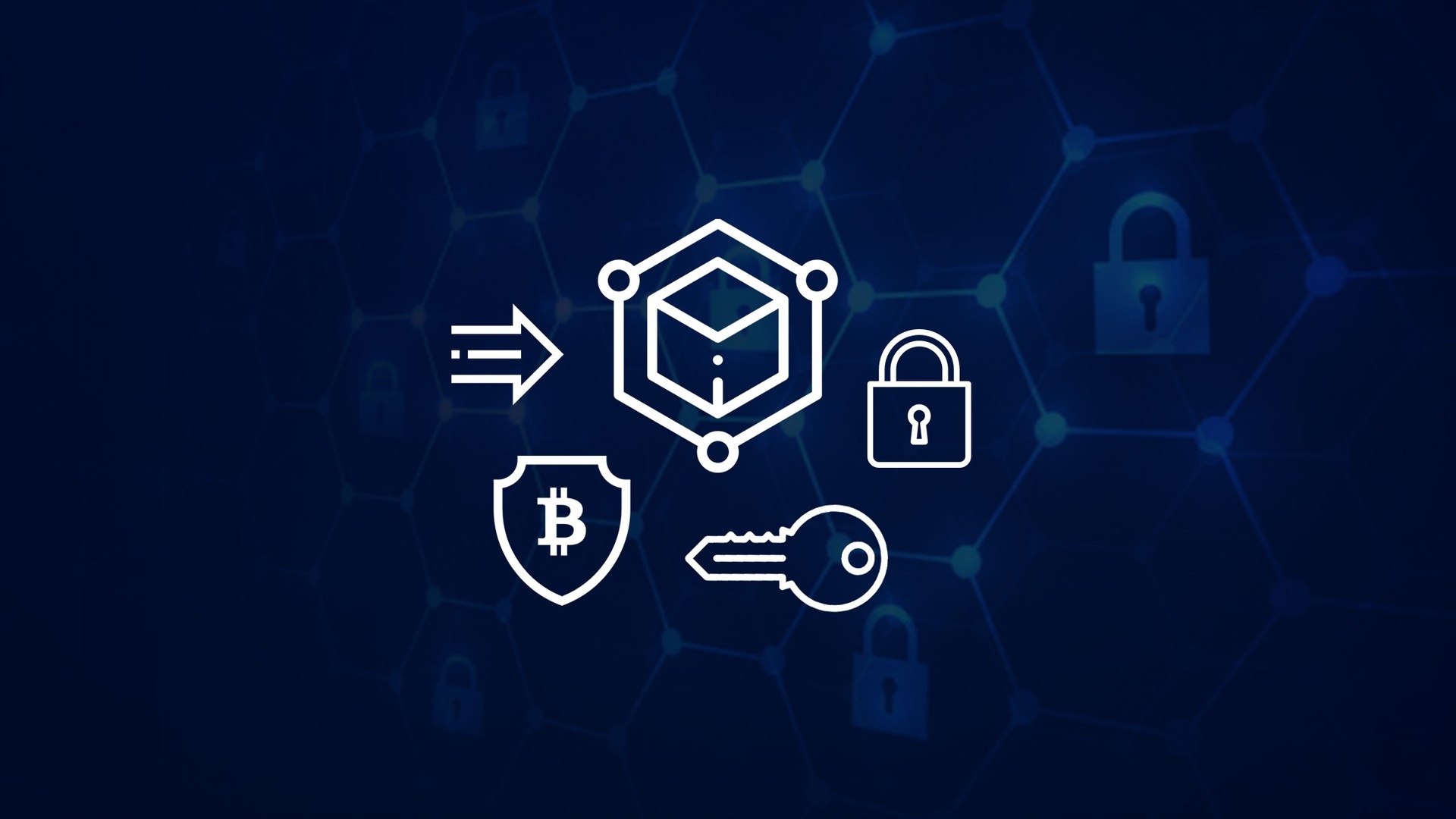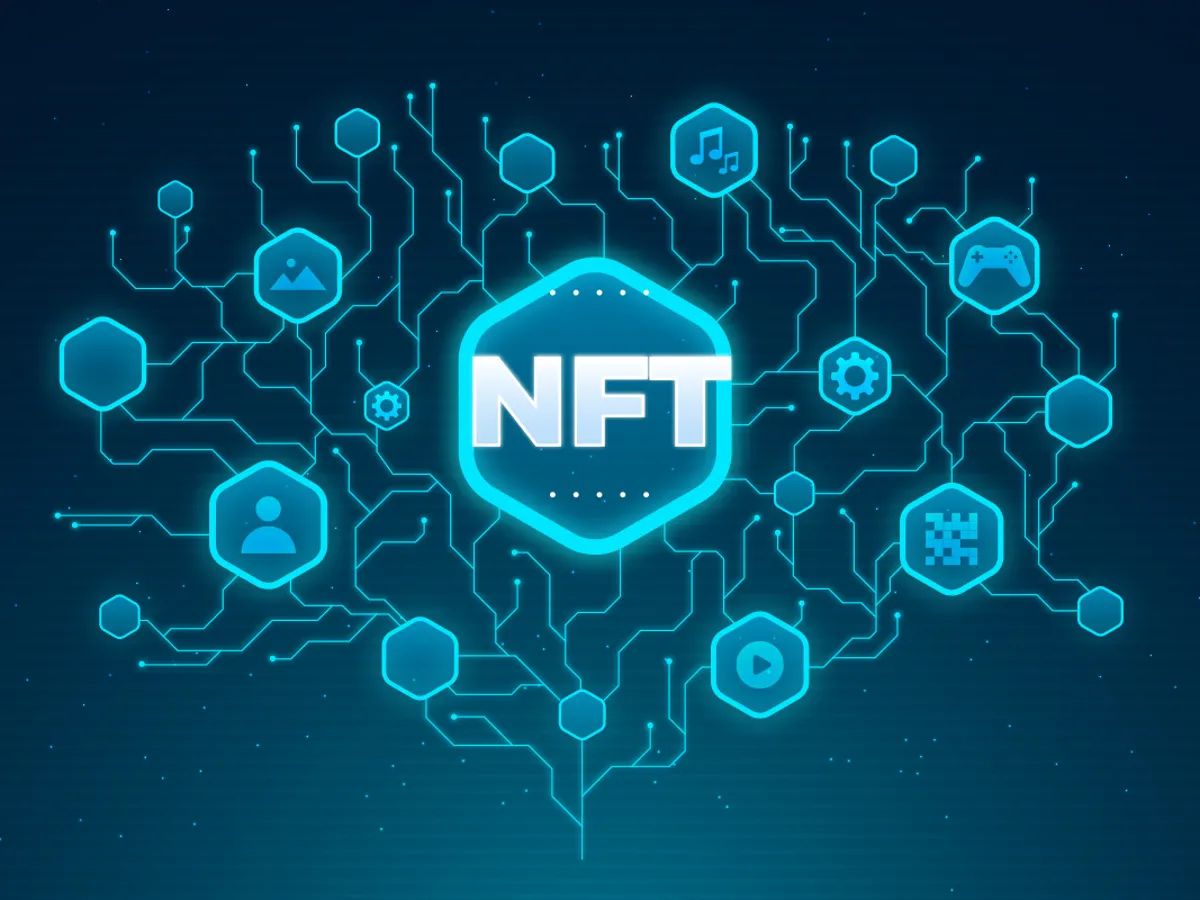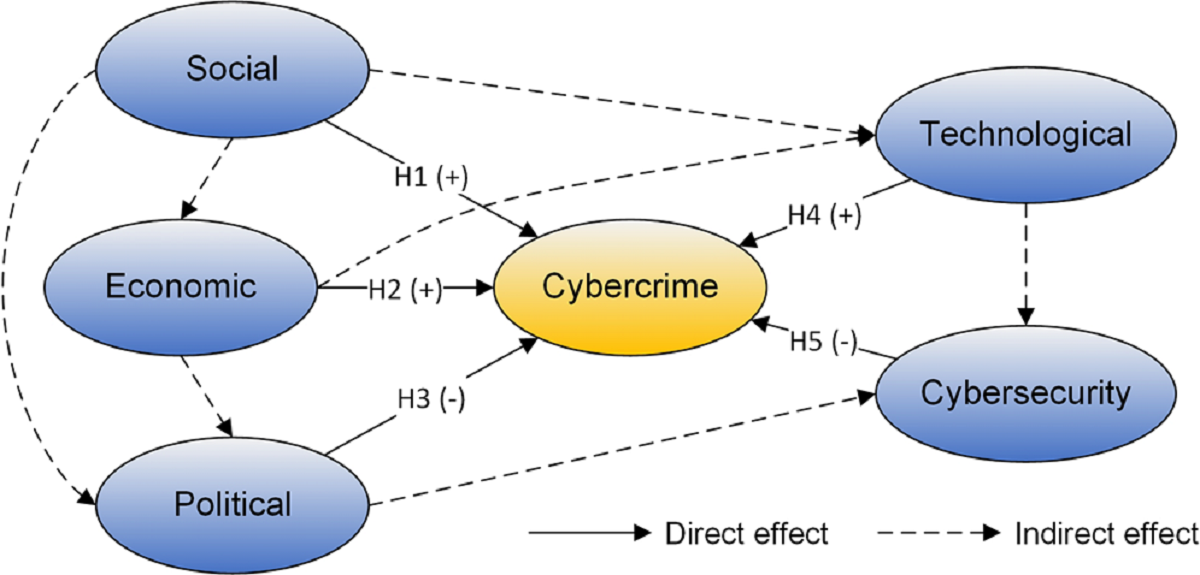Introduction
Welcome to the world of blockchain encryption, where data security and integrity are paramount. In today’s digital era, protecting sensitive information from unauthorized access has become increasingly important. Encryption plays a crucial role in ensuring the confidentiality and security of data. In the realm of blockchain, encryption is a fundamental component that enables secure transactions and builds trust among participants.
Encryption, in simple terms, refers to the process of converting information into an unreadable form to prevent unauthorized access. It involves the use of cryptographic algorithms and keys to scramble data in such a way that only authorized parties can decrypt and access the original content. Blockchain, on the other hand, is an immutable and decentralized ledger that records and verifies transactions across a network of computers.
Blockchain technology revolutionizes the way data is stored, shared, and protected. By utilizing encryption techniques, blockchain provides a robust and secure environment for various applications, such as financial transactions, supply chain management, healthcare, and more.
In this article, we will explore the concept of encryption in blockchain, its mechanisms, and the benefits it brings. By understanding the role of encryption in blockchain, you will gain insights into how this technology can enhance security and redefine trust in the digital domain.
What Is Encryption?
Encryption is a process that converts plaintext or readable data into an unreadable format, known as ciphertext, to protect it from unauthorized access. It is a fundamental technique used to ensure data security, privacy, and integrity. Encryption algorithms transform data using complex mathematical calculations, making it virtually impossible for anyone without the appropriate encryption key to decipher and extract the original information.
The encryption process involves two key components: an encryption algorithm and an encryption key. The encryption algorithm is a set of mathematical rules that govern how the data is transformed. There are different encryption algorithms available, with varying levels of security and complexity.
The encryption key is a unique piece of information that is necessary to encrypt and decrypt the data. It acts as a digital lock, ensuring that only authorized parties with the correct key can access the encrypted information. Encryption keys are generated using sophisticated cryptographic algorithms and are designed to be extremely difficult to guess or replicate.
There are two main types of encryption: symmetric encryption and asymmetric (or public-key) encryption.
- Symmetric Encryption: In symmetric encryption, the same key is used for both the encryption and decryption processes. The sender and recipient of the encrypted data must have access to the same key. The challenge with symmetric encryption is securely exchanging the key between parties without interception, known as the key distribution problem.
- Asymmetric Encryption: Asymmetric encryption, also known as public-key encryption, uses a pair of mathematically related keys: the public key and the private key. The public key is widely shared and used to encrypt data, while the private key is kept secret and used to decrypt the encrypted information. Asymmetric encryption eliminates the need for secure key exchange, making it more secure and convenient for communication over untrusted networks.
Encryption is crucial in maintaining data confidentiality and security, especially in sensitive industries like finance, healthcare, and government. By employing encryption techniques, organizations can safeguard their data and protect it from unauthorized access, ensuring the privacy and trust of their customers.
What Is Blockchain?
Blockchain is a revolutionary technology that serves as a decentralized and transparent digital ledger. It allows multiple participants to record, verify, and store transactions in a secure and tamper-proof manner. Unlike traditional centralized systems, where a central authority controls the data, blockchain operates on a distributed network of computers called nodes.
At its core, blockchain consists of a series of blocks, each containing a collection of transactions. These blocks are linked together using cryptographic hashes, forming an immutable chain. Once a block is added to the chain, it is virtually impossible to alter or delete the information within it. This immutability and transparency make blockchain an ideal platform for various applications, ranging from financial transactions to supply chain management, voting systems, and more.
One of the key features of blockchain is its decentralized nature. Every participant in the network has a copy of the entire blockchain, ensuring that no single entity has control over the data. This decentralization not only enhances the security of the network but also eliminates the risk of a single point of failure.
Blockchain operates on a consensus mechanism, a set of rules that govern how transactions are validated and added to the blockchain. The most common consensus mechanism is Proof of Work (PoW), utilized by cryptocurrencies like Bitcoin. In PoW, miners compete to solve complex mathematical problems to add a new block to the blockchain. This process requires significant computational power and ensures the integrity and security of the network.
Another popular consensus mechanism is Proof of Stake (PoS), which relies on participants “staking” a certain amount of their cryptocurrency holdings to become validators. Validators are chosen based on the amount they have staked, and their responsibility is to validate and add transactions to the blockchain. PoS is considered more energy-efficient compared to PoW and offers faster transaction confirmation times.
Blockchain technology has the potential to revolutionize industries by providing transparency, security, and efficiency in various applications. From enabling peer-to-peer financial transactions to facilitating transparent supply chain tracking, blockchain is reshaping the way we conduct business and interact with digital assets.
How Does Encryption Work in Blockchain?
Encryption plays a crucial role in ensuring the security and integrity of data in blockchain. It provides a robust layer of protection against unauthorized access and tampering. Let’s explore how encryption works in the context of blockchain.
In blockchain, each transaction and data stored in the ledger is encrypted using cryptographic algorithms. This encryption process ensures that sensitive information remains confidential and cannot be easily deciphered by unauthorized parties.
When a transaction is initiated, the data associated with it is encrypted using a combination of symmetric and asymmetric encryption techniques. This combination offers a balance between security and efficiency.
Firstly, the data is encrypted using symmetric encryption. A unique encryption key is generated for each transaction and used to scramble the data into ciphertext. This encryption key is known only to the parties involved in the transaction.
Next, asymmetric encryption is utilized. The public key of the recipient is used to encrypt the symmetric encryption key. This encrypted key, along with the ciphertext, is attached to the transaction and stored in the blockchain.
When the recipient wants to access the transaction data, they use their private key to decrypt the encrypted symmetric encryption key. Once they have the decrypted encryption key, they can then use it to decrypt the ciphertext and access the original data.
This combination of symmetric and asymmetric encryption allows for secure and efficient data communication in blockchain. It ensures that only authorized parties with access to the private key can decrypt and view the transaction data.
Additionally, blockchain incorporates additional security measures such as digital signatures to further enhance data integrity and authenticity. Digital signatures verify the identity of the sender and ensure that the transaction has not been tampered with during transit.
Overall, encryption is an integral part of the blockchain technology stack, providing robust security and protecting the confidentiality and integrity of data. It ensures that transactions and information stored in the blockchain are resistant to unauthorized access and tampering.
Public Key Encryption
Public key encryption, also known as asymmetric encryption, is a cryptographic technique widely used in blockchain to ensure secure and private communication. It relies on a pair of mathematically related keys: the public key and the private key.
The public key is made available to everyone and is used for encrypting data. It acts like a lock, and anyone with the public key can use it to encrypt messages or transactions intended for the owner of the corresponding private key.
The private key, on the other hand, is kept confidential and securely stored by the owner. It acts as the key needed to unlock the encrypted data. The private key is used to decrypt the information encrypted using the matching public key.
Public key encryption ensures confidentiality and provides a secure way for participants to communicate and exchange information in a blockchain network without having to share their private keys.
When a user wants to send an encrypted message or initiate a transaction in a blockchain network, they encrypt the data using the recipient’s public key. The recipient, who possesses the corresponding private key, can then use it to decrypt the data and access the original message or transaction details.
Public key encryption provides several advantages in the context of blockchain:
- Secure Communication: Public key encryption ensures that sensitive information, such as transaction details, remains secure and is only accessible to authorized parties.
- Key Distribution Problem: Asymmetric encryption eliminates the need for secure key exchange between parties. With public key encryption, participants can securely communicate without the risk of interception or unauthorized access to the private key.
- Data Integrity: Public key encryption, combined with digital signatures, verifies the authenticity and integrity of transactions. It ensures that the information remains unchanged during transmission.
- Non-repudiation: Public key encryption provides a way to prove the identity of the sender and receiver of a message or transaction, preventing any party from denying their involvement.
Overall, public key encryption is a crucial component of blockchain technology. It enables secure and private communication, ensuring that data remains confidential and only accessible to authorized parties with the corresponding private key.
Private Key Encryption
Private key encryption, also known as symmetric encryption, is an essential cryptographic technique used in blockchain to ensure the confidentiality and security of data. Unlike public key encryption, which uses a pair of mathematically related keys, private key encryption uses a single key to both encrypt and decrypt information.
In private key encryption, the same secret key is used by both the sender and the recipient to encrypt and decrypt data. This symmetric key must remain confidential and known only to the authorized parties involved in the communication.
When a sender wants to encrypt a message or a transaction in blockchain, they use the shared private key to encrypt the data. This process converts the plaintext into ciphertext, making it unreadable and unintelligible to anyone without the private key.
Upon receiving the encrypted message or transaction, the recipient can then use the same private key to decrypt the ciphertext and retrieve the original plaintext.
Private key encryption offers several advantages in the context of blockchain:
- Efficiency: Private key encryption is computationally faster compared to public key encryption. The absence of complex mathematical operations makes it more efficient, enabling quick encryption and decryption processes.
- Secure Communication: The shared private key ensures the confidentiality of the data being transmitted. Unauthorized parties without the private key cannot decrypt the encrypted information.
- Key Management: With private key encryption, there is no need to manage a large number of public keys. It simplifies the key management process, especially in scenarios where there are multiple participants in a blockchain network.
Despite its benefits, private key encryption has a key distribution problem. Both the sender and recipient must securely exchange the private key beforehand to ensure secure communication. This requirement can be challenging in certain scenarios, especially when there are multiple participants or when the communication takes place over untrusted networks.
In blockchain, private key encryption is often used in combination with public key encryption. The public key is employed for secure key distribution, while the private key encryption ensures the confidentiality and integrity of the actual data being transmitted.
Private key encryption is an integral part of blockchain technology, providing a secure and efficient method for encrypting and decrypting information within the network.
Digital Signature
In the realm of blockchain, digital signatures play a vital role in ensuring the authenticity, integrity, and non-repudiation of data. A digital signature is a cryptographic technique that uses asymmetric encryption to verify the identity of the sender and validate the integrity of the message or transactions.
When a sender wants to sign a message or a transaction, they use their private key to generate a digital signature. This signature is unique to both the sender and the specific piece of data being signed.
Upon receiving the signed message, the recipient can use the sender’s public key to decrypt and obtain the original signature. By comparing the decrypted signature with the original message, the recipient can confirm whether the data has been tampered with during transmission.
But how does a digital signature achieve its objectives in blockchain? Let’s explore its key characteristics:
- Authentication: The digital signature confirms the authenticity and identity of the sender. By using their private key, the sender can create a signature unique to them, which can be verified using their public key.
- Data Integrity: Any alteration to the signed message or transaction would result in a different signature during the verification process. This ensures that the data remains unchanged during transmission.
- Non-repudiation: A digital signature provides evidence that the sender cannot deny sending the message or initiating the transaction. As the signature is unique to the sender, it acts as proof of their involvement.
Digital signatures are integral to maintaining the trust and security of transactions in blockchain. They enable participants to verify the authenticity and integrity of data without relying on a centralized authority. As a result, data can be securely exchanged within the network, ensuring that information remains untampered and reliable.
It’s important to note that digital signatures in blockchain are often used in combination with other encryption techniques, such as public key encryption. This combination ensures not only secure communication but also the verification of data integrity and the identification of the sender.
Overall, digital signatures provide a robust mechanism for establishing trust and ensuring the integrity of data in blockchain. They play a crucial role in maintaining transparency, security, and authenticity within the decentralized network.
Benefits of Blockchain Encryption
Blockchain encryption brings numerous benefits to the world of digital transactions and data management. By leveraging encryption techniques within a decentralized network, blockchain offers enhanced security, privacy, and integrity. Let’s explore some of the key benefits of blockchain encryption:
- Data Confidentiality: Encryption ensures that sensitive data transmitted within the blockchain network remains confidential. Only authorized parties with the corresponding decryption keys can access and decipher the encrypted information.
- Data Integrity: Encryption provides a layer of protection against data tampering and unauthorized modifications. Each transaction and piece of information stored within the blockchain is encrypted, making it almost impossible to alter without detection.
- Secure Transactions: Encryption techniques in blockchain enable secure peer-to-peer transactions without relying on intermediaries or centralized authorities. The use of encryption ensures that the transaction details, such as payment information or contract terms, are securely transmitted and protected.
- Transparency and Trust: Blockchain encryption provides a transparent framework where participants can verify and validate transactions. The encryption ensures that information remains secure while still being verifiable by all network participants, fostering trust and transparency in the network.
- Protection against Data Breaches: Encryption serves as a powerful defense mechanism against data breaches. Even if an unauthorized party gains access to the encrypted information, they would need the decryption key to make sense of the data.
- Enhanced Privacy: Blockchain encryption provides individuals with greater control over their personal data. By encrypting personal information, users can securely store and share their data within the network, ensuring privacy and reducing the risk of identity theft or unauthorized access.
- Regulatory Compliance: Encryption plays a crucial role in adhering to data protection and privacy regulations. By encrypting sensitive data in blockchain, organizations can demonstrate their commitment to data security and compliance with regulatory standards.
Overall, blockchain encryption enhances the security, integrity, and privacy of transactions and data within the network. It empowers individuals and organizations to engage in secure and trustworthy digital interactions, while also mitigating the risks associated with data breaches and unauthorized access. By leveraging encryption techniques, blockchain technology is changing the landscape of digital transactions and data management, providing a secure and decentralized framework for various industries.
Use Cases of Blockchain Encryption
Blockchain encryption has a wide range of applications across various industries, where data security and integrity are of utmost importance. Let’s explore some of the notable use cases of blockchain encryption:
- Financial Transactions: Blockchain encryption enables secure and transparent peer-to-peer transactions without the need for intermediaries. By encrypting transaction details and ensuring data integrity, blockchain technology revolutionizes the world of digital payments, remittances, and cross-border transactions.
- Supply Chain Management: Encryption in blockchain ensures secure and traceable data sharing within supply chains. It enables participants to track and authenticate the flow of goods, verify product authenticity, and maintain a transparent and efficient supply chain ecosystem.
- Healthcare: Blockchain encryption provides a secure platform for storing and exchanging confidential patient data. It allows for secure sharing of medical records, maintaining the privacy of patients while ensuring that healthcare providers have access to accurate and up-to-date information.
- Identity Management: Blockchain encryption can be utilized to enhance identity management systems. By securing and encrypting personal information, individuals can have control over their digital identities, preventing data breaches and unauthorized access.
- Intellectual Property: Blockchain encryption offers a secure way to protect intellectual property rights. By registering digital assets on the blockchain with encrypted ownership information, creators can prove authenticity and protect their intellectual property from plagiarism and infringement.
- Voting Systems: Blockchain encryption can ensure the integrity and privacy of electronic voting systems. By encrypting voting data, blockchain technology provides a secure and tamper-resistant platform for transparent elections and reliable democratic processes.
- Smart Contracts: Blockchain encryption is essential in ensuring the security and enforceability of smart contracts. By encrypting the terms and conditions of the contract, blockchain technology enables trustless and autonomous execution of agreements without the need for intermediaries.
- Internet of Things (IoT): The combination of blockchain and encryption provides secure communication and data sharing in IoT networks. It allows for tamper-proof device interactions, ensuring the confidentiality and integrity of IoT data.
These are just a few examples of how blockchain encryption can be applied across industries. The inherent security and privacy features offered by encryption in blockchain make it a valuable tool in revolutionizing data exchange, improving efficiency, and building trust in various sectors.
Conclusion
Blockchain encryption is a fundamental aspect of this revolutionary technology that ensures the security, integrity, and privacy of data within a decentralized network. Encryption techniques, such as public key encryption and private key encryption, play a pivotal role in maintaining confidentiality, authenticity, and trustworthiness in blockchain transactions.
By encrypting data in blockchain, sensitive information remains secure from unauthorized access, ensuring the privacy and protection of personal and financial details. Encryption also guards against data tampering, as any modifications to the encrypted information would be easily detectable.
Moreover, blockchain encryption enables secure and transparent peer-to-peer transactions, eliminating the need for intermediaries and reducing transaction costs while maintaining data integrity. It empowers individuals and organizations to take control of their digital identities, share information securely, and establish trust within the network.
The benefits of blockchain encryption extend across various industries. From transforming financial transactions and supply chain management to revolutionizing healthcare systems and protecting intellectual property rights, blockchain encryption provides a secure and robust platform for innovative applications.
As blockchain technology continues to evolve, encryption will remain a critical component for safeguarding data and enhancing trust in digital interactions. It offers a powerful solution to the challenges surrounding data security and privacy, ensuring that sensitive information remains protected even in the face of evolving cyber threats.
In conclusion, blockchain encryption has the potential to reshape the way data is stored, shared, and secured. It paves the way for a future where secure, transparent, and trusted digital transactions can thrive, enabling individuals and organizations to embrace the benefits of a decentralized and secure digital ecosystem.

























